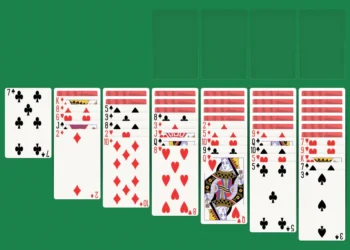A new release usually arrives as a task: finish the campaign, unlock the skins, earn a platinum trophy. The menus, quests, and progress bars all point the player toward an endpoint. Yet some digital worlds cross an invisible line. They stop feeling like tasks and start feeling like locations — somewhere you go rather than something you merely do. Friends log in not to chase objectives but to check the digital weather or catch up at a familiar vista. On community threads at click here — a long-running hub for online-game lore and server histories — veterans share stories about maps that feel like hometowns even years after official support ended.
The Shift From Activity to Habitat
Designers rarely announce, “This level is now a place.” The transition creeps in through repeated visits. Landmarks gain personal nicknames. Shortcuts turn into well-worn trails. A background track that once sounded generic becomes an instant mood trigger. Psychological studies compare the effect to the way commuters stop noticing street signs — the route imprints on muscle memory. In a live-service title, annual events layer seasonal memories on top: one winter’s fireworks, another summer’s beach furniture, each tying emotion to digital soil.
Signals a Game Has Become a Place
- Routine over rush — Players log in simply to sit on a pier, decorate a room, or listen to rain in a jungle biome.
- Personal geography — Friends give directions with phrases like “Meet at the old tree” instead of waypoint coordinates.
- Temporal texture — Day-night cycles, weather shifts, or holiday props make successive sessions feel like returning, not restarting.
- Social gravity — People schedule real-world time around in-game sunsets, fishing windows, or fan-run festivals.
These cues show the map has gained a lived-in quality, independent of the developer’s original checklist.
Why Certain Worlds Invite Attachment
Three design pillars tend to foster the “place” effect. First, consistent geography: landmarks rarely move, and expansions grow outward rather than overwrite. Second, ambient systems such as weather, wildlife, or background NPC routines that continue even when the player idles. Third, low-pressure loops allowing time to wander. When challenge dominates every corner, the mind stays in task mode; when pockets of calm exist, the mind switches to presence mode.
Developers sometimes cultivate the shift deliberately. They add photo modes, idle animations, and player housing — optional features that say, “Stay as long as you like.” But just as often, the community takes charge, layering emergent rituals on top of the code. A dead PVP arena becomes a parkour course. A glitchy rooftop becomes the place to watch virtual sunrises.
Community Practices That Turn Space Into Place
- Player-made landmarks — Graffiti tags, dropped items, or emote chains marking secret corners.
- Unofficial events — Flash-mobs, fashion shows, or group screenshots scheduled purely by word of mouth.
- Guided tours — Veterans lead newcomers along story routes long after the quests are obsolete.
- Local myths — Campfire tales about an unbeatable boss or a hidden ghost that spawns only at 3 a.m.
Over time, these layers of shared memory outweigh the original design notes.
Emotional Benefits of Digital “Home Grounds”
Returning to a familiar server can soothe the same neural circuits that fire when someone walks a childhood street. Predictable vistas lower cognitive load; the player no longer scans for threats, freeing attention for conversation or quiet reflection. Researchers studying MMOs have linked such spaces to stress recovery akin to real-world green zones. In pandemic years, virtual plazas even substituted for lost third places — cafés, libraries, parks — giving isolated people somewhere to inhabit together.
When the Magic Breaks
A world can slip back from “place” to “product” if updates erase landmarks, if monetization overwhelms ambience, or if server closures yank the ground out from under residents. The emotional backlash is tangible: social feeds fill with farewell vigils, screenshot memorials, and petitions for private-server rights. Designers who respect placehood tread carefully during map revamps — preserving skyline silhouettes, archiving legacy items, and offering museum shards where history persists in read-only form.
Carrying the Lesson Forward
Single-player developers now borrow tricks from live worlds: persistent hubs between missions, dynamic weather, photo diaries. Even roguelikes experiment with town phases that remember the player’s décor between runs, urging roots to form. Outside gaming, architects and UX planners study these digital homesteads to learn how people claim and curate space when physical laws cost nothing.
Closing Thought
A game becomes a place the moment goals shrink and presence expands — when pressing “Log In” feels less like starting an activity and more like opening a door. Players greet familiar skylines, slide into ritual routes, and let conversation float in the background hum of virtual cicadas. These worlds prove that meaningful locations need no soil beneath them; they need only consistency, shared memory, and the freedom to linger. For anyone willing to look beyond the objective tracker, the most enduring treasure might be the map itself, patiently waiting to feel like home.










